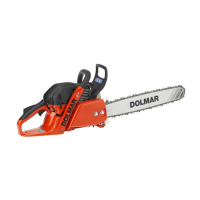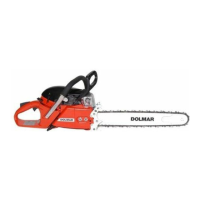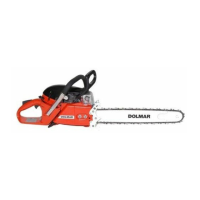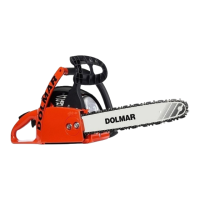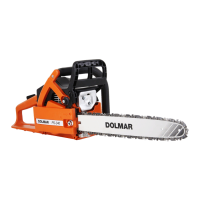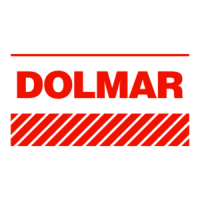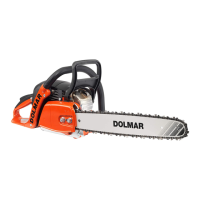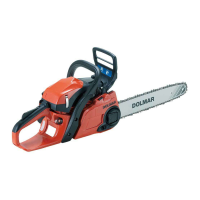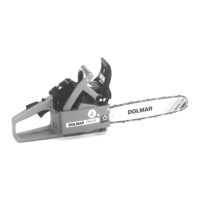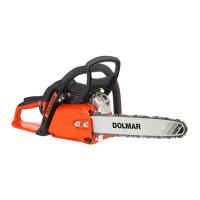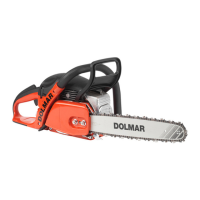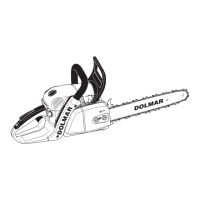Operator’s and Safety Manual
for Gasoline Chain Saws
WARNING!
Read and understand this Manual. Always follow safety precautions in the Operator’s and Safety Manual.
Improper use can cause serious injury!
WARNING!
FUELS WITH MORE THAN 10% ETHANOL ARE NOT APPROVED FOR USE IN DOLMAR 2-STROKE ENGINES!
Use of alternative fuels, such as E-20 (20% ethanol), E-85 (85% ethanol) or any fuels not meeting DOLMAR
requirements are not approved for use in DOLMAR 2-stroke gasoline engines!
USE OF ALTERNATIVE FUELS CAN CAUSE THE FOLLOWING PROBLEMS:
Poor engine performance, loss of power, overheating, fuel vapor lock, improper clutch engagement, premature
deterioration of fuel lines, premature deterioration of gaskets, premature deterioration of carburetors.
USING ALTERNATIVE FUELS AND/OR 2-STROKE OILS NOT ACCORDING TO JASO FC OR ISO-L-EGD IN
DOLMAR 2-STROKE ENGINES WILL VOID YOUR ENGINE WARRANTY!
PS-6100
PS-6100 H
